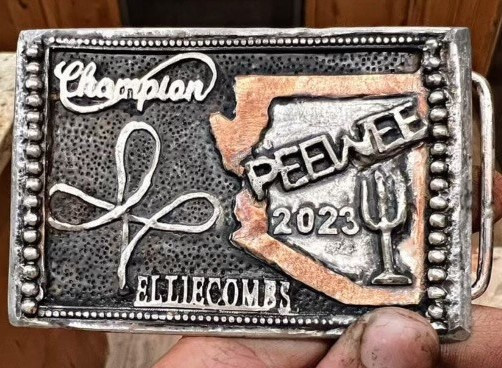Previously I posted a blog about mastering basic soldering, you can find that one here:
https://www.barlowsgems.net/cabochon-blog/mastering-the-basics-of-soldering-for-jewelers/
And last month we talked about troubleshooting common problems in soldering, find that one here:
https://www.barlowsgems.net/stones-and-jewelry-blog/troubleshooting-soldering-problems-/
This month we will discuss soldering various items to a flat sheet of metal:
In all soldering the most important thing to consider is fit. The two items should sit flush with little or no gaps. This is usually accomplished by filing the pieces. It is very important to make sure that your metal items and solder are clean, and that your flux is uncontaminated. See the troubleshooting blog on how to do this, as well as to see tips on heat and torch tips.
Small spheres can be soldered directly onto a metal flat sheet by cutting small pieces of solder and placing them between the edge of the sphere and the sheet and holding them in place with padded tweezers or wire. Before soldering larger spheres to metal sheet, you should first drill or punch a small hole in the sheet where the sphere will go. This helps disburse the heat. If you are soldering a half dome to sheet metal you should always consider drilling or punching a small hole in the sheet so that the heat can escape underneath the dome! Alternatively, you can try not quite smoothing all the dome edges, or filing small gap in the edge, or not quite soldering completely around, so there is some type of gap between it and the sheet.
If you a soldering a bezel to a metal flat sheet, make sure that the bezel and sheet fit together tightly. If you plan to trim the sheet to the bezel size, you should still cut out the sheet slightly larger than the bezel. Do any stamping before soldering. Set up the bezel on a tripod and screen to allow you to heat the piece from below. You can place solder around the inside edge of the bezel or between the bezel and the sheet. Hold the bezel down with a soldering pick or with wire. Make sure the soldering pieces are touching both the bezel and the sheet and make sure they are spaced a little apart. Solder flows to about 3 times its size. Use a jewelers saw to trim to excess sheet metal. In a future blog I will go over making the bezel.
There are two ways to solder wire ends to a flat metal sheet. You can melt solder on the end of the wire. Reflux the melted solder, and also the spot on the sheet where you want the wire to go. Place the end of the wire on the sheet and heat with the torch until the solder flows to the sheet from the end of the wire. Or you can first drill a hole, the same diameter as the wire, through the sheet and pass the wire through that hole. Apply flux and solder to the same and heat with the torch until the solder flows.
When you wish to solder wire lengthwise or parallel to the sheet, first secure the wire with binding wire. Both pieces are fluxed and small pieces of solder placed along the joint where the wire meets the sheet. Place solder along the entire length. The flux is dried and heat is applied until the solder flows.
When you wish to solder the wire length to the edge of the metal sheet, make sure that the wire makes a perfect joint with the edge of the sheet. You can use straight pins stuck into the charcoal block to stabilize the piece. Place the solder on the inside of the joint, so that when the object is heated the solder will flow outward to the direction of the flame of the torch.
If you wish to solder a jump ring to a flat metal sheet, you should cut the jump ring in half, then hold it with tweezers and flux the ends. Apply small pieces of solder to the ends and apply heat directly to the ends until the solder melts. Flux the ends and the area on the sheet where you want the jump ring to go. While still holding the ring with the tweezers, apply heat to the sheet and the ring until the solder flows.
And finally, if you wish to solder 2 pieces of metal sheet together, there are 2 methods to try. First, small pieces of solder can be placed on the underside of the top piece of metal sheet. The metal is then placed on top of the other piece, which has already been fluxed, and apply heat to the metals until the solder flows. Or you can simply flux both pieces of metal sheet, place them together. Then take very thin pieces of solder and place them along the seam. Apply heat until the solder flows.
Check back next month for a few more soldering tips and techniques!
 US Dollar
US Dollar
 Australian Dollar
Australian Dollar
 Euro
Euro
 Canadian Dollar
Canadian Dollar
 British Pound Sterling
British Pound Sterling

